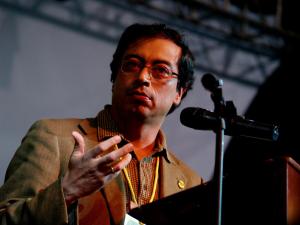A Congressional Research Service report zeroes in on the Jalisco New Generation Cartel, the Remedy Alliance is easing naloxone bottlenecks, and more.

Naloxone Access About to Get Easier. Thanks to an informal buyers' club for naloxone that has morphed into an entity known as the Remedy Alliance, access to inexpensive naloxone -- the opioid overdose reversal drug -- is getting easier. The Alliance credits two major developments for the urgently needed breakthrough. First, they have managed to reach agreements with drug manufacturers to get the drug at a discount rate, and second, they have restructured to a system that allows local harm reduction groups to order the drug through an online store, getting around a labyrinthine web of federal regulations that has bottlenecked the flow of the drug amidst the ongoing overdose crisis.
"We think this will totally change the landscape of naloxone in the United States," said Nabarun Dasgupta, the nonprofit's board president and a scientist at the Gillings School of Global Public Health at the University of North Carolina at Chapel Hill. The group, formerly known as the Opioid Safety and Naloxone Network Buyers Club, has already reversed thousands of opioid overdoses and distributed 1.3 million doses of naloxone last year. Now, the Alliance expects to distribute 2 million doses this year.
International
Ex-Leftist Rebel, Drug War Critic Assumes Office as Colombia's President. Gustavo Petro, a former member of the leftist M-19 guerrilla army, was sworn into office Sunday, helping to cement an emerging leftist bloc around the region, consisting of Bolivia, Chile, Mexico, Peru, Venezuela and, most likely, Brazil after its October election. He said Colombia was getting a "second chance" to fight violence and poverty. He also said he was preparing to start peace talks with various armed groups around the country, and he called on the United States to change its prohibitionist approach to drug policy. "It's time for a new international convention that accepts that the war on drugs has failed," he said. "Of course, peace is possible. But it depends on current drug policies being substituted with strong measures that prevent consumption in developed societies."
Jalisco New Generation Cartel Present in 27 of Mexico's 37 States, Congressional Report Finds. The Jalisco New Generation Cartel (CJNG), the country's most powerful, now operates in 27 states and Mexico City, according to a new report from the Congressional Research Service (CRS). The report, "Mexico: Organized Crime and Drug Trafficking Organizations," says that the CJNG is the dominant criminal force in six states: Jalisco, Nayarit, Colima, Guerrero, Mexico, and Veracruz. It is weakest in Mexico's northwest, where the Sinaloa Cartel still dominates. CRS described the CJNG as an "extremely powerful cartel" that has a "reputations for extreme and intimidating violence." It also noted that the DEA "considers the CJNG a top US threat and Mexico's best-armed criminal group."
"The CJNG built its dominance internationally first through extending its presence through a rapid expansion inside Mexico," CRS said. "In 2016, many analysts maintained the CJNG controlled a territory equivalent to almost half of Mexico. The group has battled Los Zetas and Gulf Cartel factions in Tabasco, Veracruz, and Guanajuato, as well as the Sinaloa… [Cartel] in the Baja Peninsula and Chihuahua." The CJNG's ambitious expansion campaign was characterized by high levels of violence, particularly in Ciudad Juárez and Tijuana.
By taking over key ports on both the Atlantic and Pacific coasts, the CJNG has consolidated "important components of the global narcotics supply chain," the CRS said. "In particular, the CJNG maintains reported control over the ports of Veracruz, Manzanillo, and Lázaro Cárdenas, which has given the group access to precursor chemicals that flow into Mexico from China and other parts of Latin America," the report said. As a result, according to some analysts, the CJNG has pursued an aggressive growth strategy underwritten by US demand for Mexican methamphetamine, heroin, and fentanyl… Despite leadership losses, the CJNG has extended its geographic reach and maintained its own cohesion while exploiting the infighting among factions of the Sinaloa organization."
This work by StoptheDrugWar.org is licensed under Creative Commons Attribution-ShareAlike 4.0 International
Comments
Somewhat contradictory message coming from Petro
He talks about accepting that the war on drugs has failed. but he also says "it depends on current drug policies being substituted with strong measures that prevent consumption in developed societies." But that's the policy that has been followed for generations and that got us into this mess.
With the rise of synthetic drugs, nterdiction is more of a hopeless strategy than ever.
Government needs to seize control of as much of distribution as possible, to stop the vast empowerment of violent cartels and local gangs, and to stop the vast number of crimes being committed by addicts and users to pay the black market prices that empower the gangs. And to put distribution in the hands of people who want to help addicts, not crucify them.
Add new comment